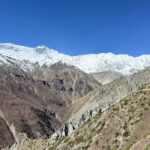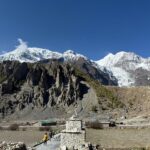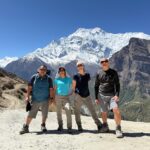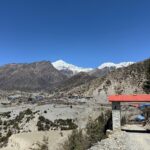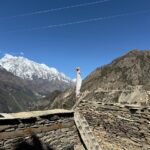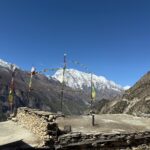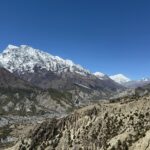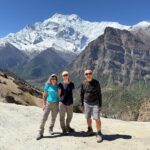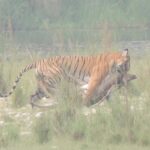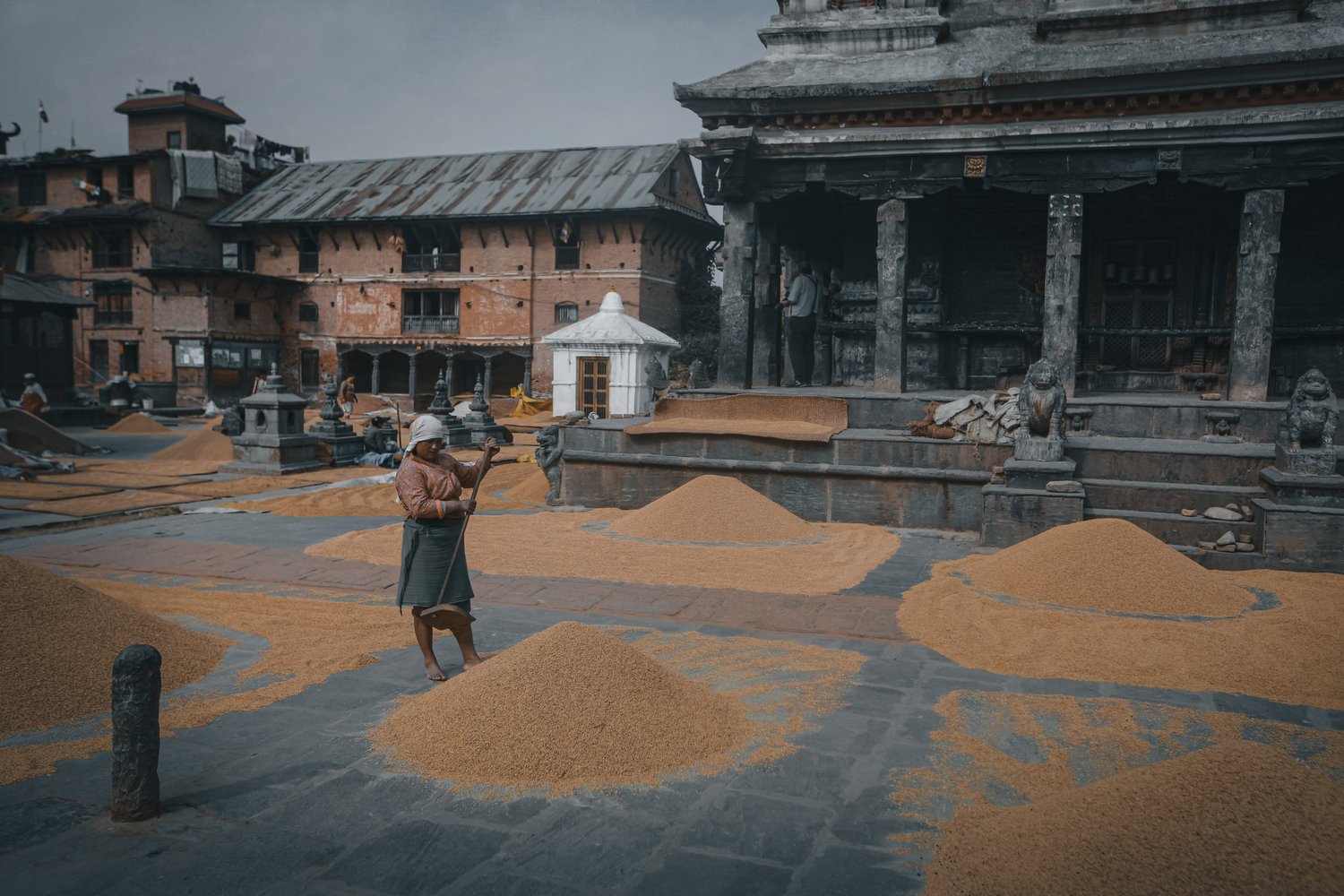
Bungmati Khokana Village Tour
A day trip to Bungamati and Khokana is a must-add to your itinerary. These villages offer a glimpse into the valley’s rich cultural and historical heritage. Bungmati is well-known for both its deep religious importance and centuries-old woodcarving legacy. Called the residence of Rato Matsyendranath, the “God of Rain,” Bungmati draws pilgrims as well as tourists. The god lives in a temple in the center of the village; the annual Rato Matsyendranath Festival, which falls in April or May, attracts people from all around the valley. Celebrated by the dragging of a large chariot carrying the deity throughout the area, the celebration marks favors for rainfall and agricultural success.
The area is also known as the hub of handicap work. Renowned for their exquisite woodwork, Bungmati’s craftsmen create furniture and decorative pieces as well as carved windows and doors. Both locally and abroad, their work is much sought after and a trademark of Newari society.
Neighbouring Bungmati village Khokana is well recognized for producing premium mustard oil. For centuries, oil has been extracted using traditional wooden presses run either manually or by bullocks—a method maintained until now. A staple in the homes of valley people and a common item among visitors, the oil is prized for its cleanliness and health advantages.
Apart from mustard oil, Khokana stands for agricultural legacy. Lush fields encircle the village, where residents apply age-old farming methods. Especially the Sikali Jatra, its celebrations of the patron deity of the hamlet provide a distinctive cultural experience with traditional dances, ceremonies, and performances.
Reasons to Visit Bungmati and Khokana Villages
- Experience Authentic Newari Culture
Seeing Bungmati and Khokana is a unique opportunity to learn about the customs of the most notable ethnic group in Nepal, the Newar people. These communities offer a great cultural immersion from their own architectural designs to their different celebrations. - See Expert Craftmen at Work
Talented woodcarvers in Bungmati create complex designs that have come to represent Newari art. Often nestled away in courtyards, their workshops let you observe personally the degree of workmanship involved in their masterpieces. In Khokana, too, you can see the centuries-unchanged cultural practice of traditional mustard oil extraction. - Engage in Festive Activities
The rich in mythology and custom celebrations of both towns are well-known. Unique cultural events like the Rato Matsyendranath Festival in Bungmati and the Sikali Jatra in Khokana help to revive the villages with music, ceremonies, and customs. - Visit Sites of History and Religion
Important religious sites providing insights into the spiritual activities of the area are Bungmati’s Rato Matsyendranath Temple and Khokana’s Sikali Temple. Apart from houses of worship, these temples are architectural wonders. - Get Away from Kathmandu’s Rush
Bungmati and Khokana offer a calm haven from the metropolitan turmoil of Kathmandu for people looking for a peaceful retreat. A revitalizing experience results from the peaceful surroundings and the basic, slow-paced way of life the people lead.
Bungmati Khokana Villlage Tours and Activities
- Cultural Discovery at Bungmati
Bungmati is a veritable gold mine of history and art. Beginning your trip at the Rato Matsyendranath Temple will allow you to discover the importance of the god and the celebration honoring him. Wander the cobblestone lanes of the village, appreciating the ancient Newari architecture with its brick cottages and finely carved wooden windows and doors. Often buzzing with activity, the village square is the social and cultural center of the community.The chance to see neighborhood woodcarvers at work is one of Bungmati’s attractions. From little ornamental objects to complex furniture, every piece they produce clearly shows their talent and accuracy. Visitors can engage with the artists, discover their methods, and maybe make purchases of mementos to bring back.
- Khokana’s traditional mustard oil mills
A main draw in Khokana is the old mustard oil mills. To extract oil from mustard seeds, these mills run wooden presses driven by bullocks or hand labor. From ground the seeds to extract the oil, visitors may view the whole process and learn about the cultural importance of this one.Another must-see location is the town center, which features lovely plaza surrounded by mud-brick houses and public areas. The simplicity of Khokana’s existence mixed with its strong agricultural background presents a clear contrast to the modernism of Kathmandu. - Joint Bungmati-Khokana Day Tour
Travelers may choose a combined day trip to Bungmati and Khokana. Usually starting in Bungmati, the excursion starts with exploring its temples, handicapped workshops, and gorgeous streets. You can next visit the mustard oil mills in Khokana, have a classic Newari lunch, and meander slowly throughout the lanes and fields of the village.For those with limited time, this tour offers a complete experience of the cultural and historical richness of both villages, hence it is a perfect choice. - Join Festivals
Should your trip fall on festival dates, don’t miss the chance to take part. Comprising a chariot procession, music, and celebrations, the Rato Matsyendranath Festival in Bungmati is a big event spanning many weeks. Comparably, the Sikali Jatra in Khokana is a special celebration providing a window into old Newari customs and ceremonies. - Nature Walks
With their rustic architecture, cobblestone streets, and picturesque surrounds, Bungmati and Khokana are both rather photogenic. Photographers will have lots of chances to really depict rural Nepal. Short treks and walks in the surroundings of the towns allow nature enthusiasts to take in breathtaking views of the valley and the neighboring hills. - Homestay Experiences
Staying overnight in a homestay is a fantastic way for people wishing to really engage in local culture. Bungmati provides many homestays where guests may learn about the daily life of the locals, eat home-cooked cuisine, and encounter traditional Newari hospitality. This encounter helps one to establish a closer link with the customs and culture of the area.
Suggested Itinerary
Morning:
Depart from Kathmandu and drive to Bungmati (approx. 1 hour).
Visit the Rato Matsyendranath Temple and explore the village.
Observe woodcarvers at work in their workshops.
Midday:
Head to Khokana (10-minute drive).
Tour the mustard oil mills and learn about traditional oil production.
Explore the village square and enjoy a traditional Newari lunch.
Afternoon:
Take a leisurely walk through Khokana’s fields or return to Bungmati for additional exploration.
Drive back to Kathmandu by late afternoon.

